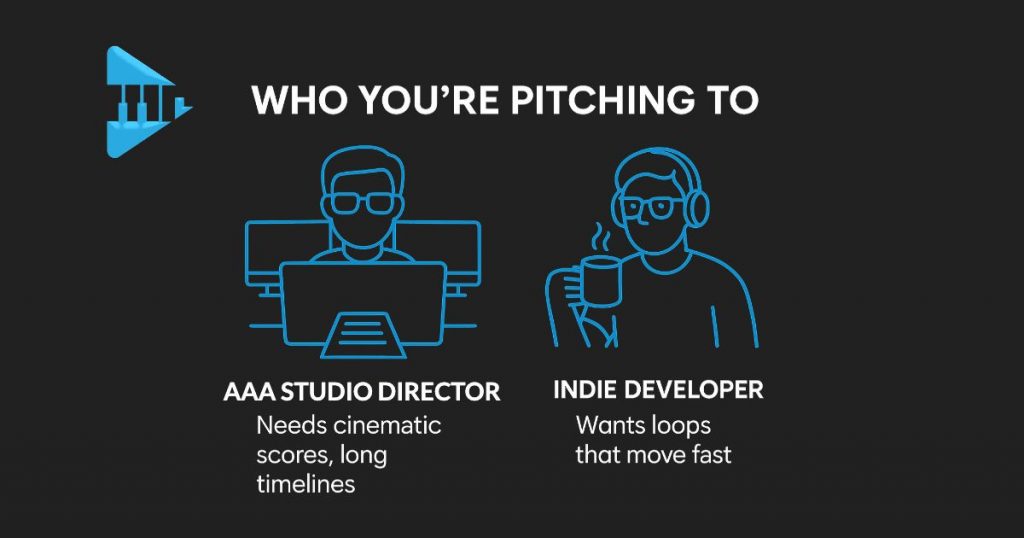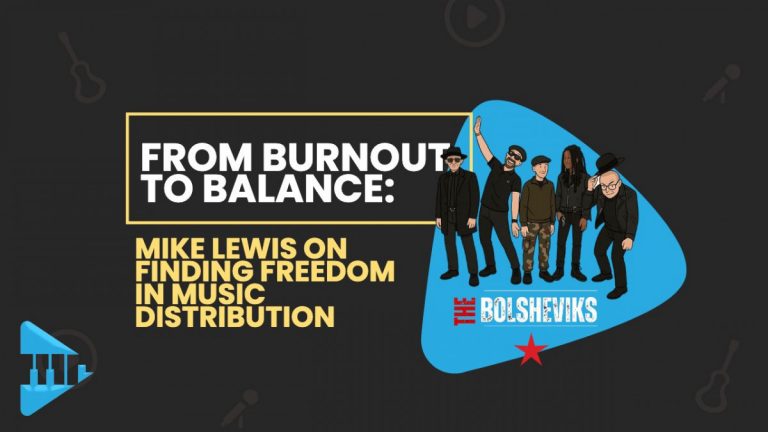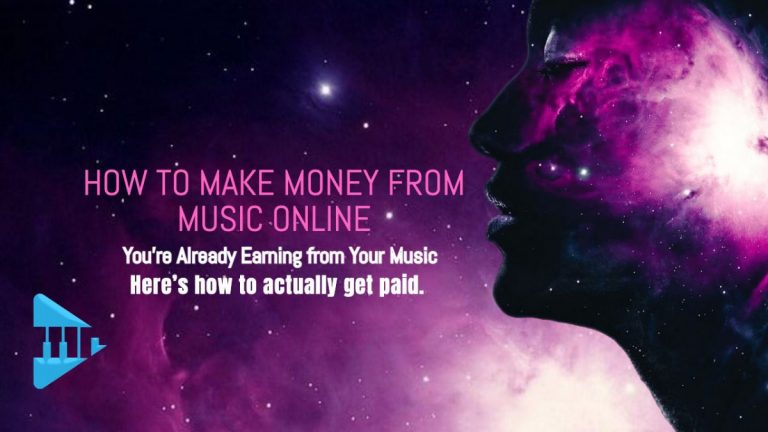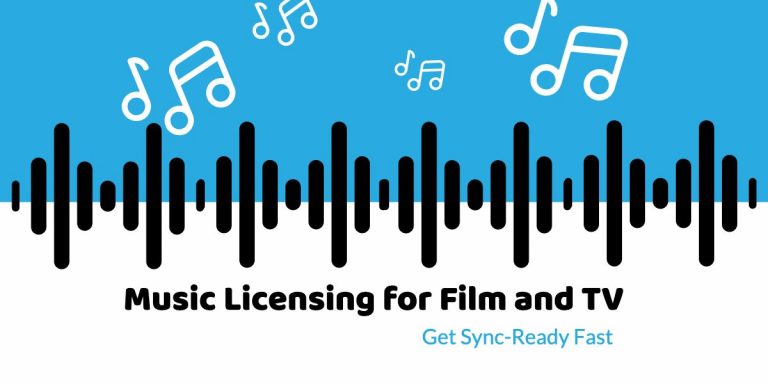Quick Answer / TL;DR
To submit music for video games, create seamless, stem-ready tracks you fully own. Add cue sheets and metadata, then pitch directly to indie developers or music supervisors. Register your rights first so every sync, stream, and soundtrack earns royalties automatically.
Ready to build your submission kit?
Table of Contents
ToggleWhy Game Music Is the Next Big Frontier
Post Malone once said some of the best music ever made comes from video games. He’s right. That melody isn’t just background sound, it’s a feeling that stays with you long after the game ends.
The best video game music does that. It builds worlds, tells stories, and leaves fingerprints on memory.
For DIY artists, that same world is wide open. Developers need emotion that adapts and moves, and they often look beyond traditional composers to find it.
If your tracks carry story and your rights are in order, you can compete.
The global video game music market was worth about $1.45 billion in 2024 and is projected to reach $3.21 billion by 2033, growing steadily each year. Studios of every size now license music from independent artists who understand gameplay. That shift means real openings for musicians who deliver work that fits a game’s world and clears easily.
This guide shows how to do exactly that. You’ll learn to think like a developer, build a submission kit that fits any engine, and make sure every placement keeps paying you long after the credits roll.

Know Your Audience: AAA vs Indie Studios
Before you pitch a single track, know who you are talking to.
The way you approach a big AAA publisher is not the same as how you’d reach a smaller indie or DIY studio.
Indie and DIY developers move faster, make creative decisions directly, and often work one-on-one with the composer. They want tracks that carry emotion and can be shaped quickly inside the game.
AAA studios, on the other hand, run on larger teams, long timelines, and detailed production pipelines.
Here’s how they compare:
| Studio Type | What They Need | Typical Budget | Best Pitch Approach |
| AAA Studios | Cinematic scores, adaptive audio, complex middleware integration | $5,000-$50,000+ per project | Build credits first. Focus on technical delivery and large-scale collaboration. |
| Indie Studios | Loops, mood pieces, memorable hooks that can repeat cleanly | $200–$2,000 per track | Show flexibility. Offer ready-to-use stems and fast communication. |
For most artists, indie and DIY placements are the best entry point.
They move quickly, give you real credits, and teach you how to work like part of the production team.
Think Like a Developer When Creating Game Music
Most game developers want tracks that work inside a game, not just songs that sound good on their own.
When you write, think in moments, not verses and hooks.
Your cue might loop for twenty minutes, fade under dialogue, or change with player movement.
Shorter cues and clean transitions work better than long songs that can’t breathe in gameplay.
Test your tracks in middleware like FMOD or Wwise to hear how they loop and react.
Label every file clearly. A developer shouldn’t have to guess what “final_mix_v5.wav” means.
The easier your music drops into the engine, the more likely they’ll use it.
How to Tailor Your Music Pitch to Game Developers
Every developer wants to feel like you understand their world.
That only happens when your pitch sounds like it was written for them, not everyone else on your mailing list.
Audio director Michael Kamper, in an article for GameDeveloper.com, explains that good communication begins the moment a composer makes contact.
Composer Jesse Harlin, in his VGMO interview and columns for GameDeveloper.com, often talks about curiosity as the key to long-term success.
Both ideas point in the same direction: approach developers as creative partners, not as sales targets.
Audio director Rob Bridgett, writing on DesigningSound.org, suggests that focused, relevant demos carry more weight than a folder of random tracks.
He encourages composers to send cues that fit the project’s tone and gameplay, not just show range.
If you’re pitching a horror game, send one tense loop that builds slowly and leaves space for silence.
If it’s a bright, retro platformer, send something upbeat that supports rhythm and motion without overwhelming sound effects.
It’s not about volume. It’s about respect for the project and the people behind it.
When your pitch feels like it belongs in their world, you stop being another name in their inbox and start looking like a collaborator.
Here’s how music moves through the game development pipeline – from composer to player.

Build Your Game Music Submission Kit
Most submissions fail before anyone even hits play.
It’s rarely because the music is bad. It’s because it’s hard to use.
Developers don’t have time to fix levels, rename files, or cut loops that click. They need music that drops straight into the engine and just works. That’s what a submission kit does. It saves them time and makes you look like a pro.
Here’s what a good one should include:
| Step | What You Need | Why It Matters | Melody Rights Tip |
| 1. Core Track | A mastered mix under two minutes | Grabs attention fast and sets tone | Use the strongest section, not the full song |
| 2. Stems / Versions | Drums, bass, melody, and ambient layers | Lets devs shape or loop easily | Label files clearly, e.g. GameName_Exploration_Stem1.wav |
| 3. Loop & Transition Edits | Clean start and end points | Saves setup time inside the engine | Test in FMOD or Wwise before sending |
| 4. Metadata & Cue Sheet | Title, BPM, length, writers, and contact info | Keeps workflow organized and ensures credit | Fill this out before you share anything |
| 5. Rights Confirmation | Proof you control both master and publishing | Prevents clearance delays | Keep a signed PDF from every co-writer |
| 6. Pitch Email / Mini Deck | Two or three sentences plus a folder link | Helps devs picture your track in their world | Mention gameplay fit and ask one smart question |
Follow up once, about ten days after sending. Keep it short, polite, and personal.
Even a simple folder built like this shows you understand how games are made.
It’s not about volume. It’s about making life easier for the developer who might hire you again and helping you spot more music submission opportunities once your kit is ready.
Where to Submit Your Music
Start small and go where developers already hang out. Try Groover Sync, GameDev.net, or the Unity Asset Store if you want to sell music to video game companies directly instead of going through a publisher.
Join Discord communities for FMOD, Unreal Engine, and Itch.io creators.
These are the spaces where new teams form and look for collaborators. A few solid indie credits can lead to paid work and open real sync licensing opportunities if you treat each project like a collaboration, not a sale.
Once your music is placed, register it with Melody Rights to make sure every sync, stream, and soundtrack royalty is tracked automatically.
It’s the simplest way to manage your catalogue and get paid for every use.
Rights and Royalties Explained
Getting your music into a game feels great. Getting paid for it feels better.
To make that happen, you need to understand licensing music for video games and how each right turns into real income once your track is used inside a game.
When your track is licensed for a video game, income usually comes from three main sources:
| Source | What It Covers | How You’re Paid |
| Sync Fee | One-time fee paid by the developer when your track is licensed for the game | Negotiated upfront |
| Digital Mechanical Royalties | Revenue from soundtrack sales or streams (Spotify, Apple, Bandcamp, etc.) | Collected by your distributor or rights admin |
| Performance Royalties | When gameplay streams or soundtrack music appear on Twitch, YouTube, or other public platforms | Collected through your PRO (ASCAP, BMI, PRS, SOCAN, etc.) |
To claim those royalties, your metadata has to be correct.
Add ISRCs, song titles, writer info, and PRO details to every file before you pitch it.
Unregistered works can’t be tracked, and that’s how artists lose video game music royalties they don’t even know they’ve earned.
Also make sure you control both Publishing vs. Master Rights.
If you wrote the track with someone else, get a short written agreement that confirms you both approve the submission. It prevents clearance delays and protects your share of the income.
If you’re unsure how to handle registration, read How to Register Your Music Properly.
Understanding this admin side doesn’t just protect you, it’s what keeps your music earning long after the game is released.
Royalty Flow at a Glance:
Game Placement → Sync Fee → Soundtrack Streams → Performance Royalties via your PRO.
Melody Rights tracks it all automatically so you never lose income you’ve already earned.

Build Proof and Grow Through Indie Game Placements
You don’t need a huge studio contract to build a real career in game music.
Plenty of working composers make their name through small indie teams and jam projects that start out as passion builds.
These developers move fast. They care about feel and storytelling more than credits or fame.
If you can give them music that fits their world and works inside their engine, you’ll earn trust and probably repeat work.
Look for the communities where new games take shape.
Try Global Game Jam or Ludum Dare. Spend time on Itch.io or in Discord servers for Unity and Unreal.
You’ll find small teams that need music as much as they need code, which makes them perfect for learning music licensing for indie games.
After the Launch: Leverage Your Placement
When the game finally comes out, don’t disappear.
That moment is a chance to build momentum, not move on.
Ask if there’s a plan to release the soundtrack.
If not, suggest it. Offer to help format or master the audio for streaming.
Every stream earns mechanical royalties, and that income adds up over time.
Keep the relationship warm.
Follow the game’s updates, comment when they post, stay visible.
When they need music for a sequel or DLC, they’ll remember that you cared about the project.
Use Melody Rights to track what your music earns.
It’s the easiest way to make sure your placements keep paying you long after the credits roll.
Each game you work on builds your reputation and your catalogue.
Stay involved, stay easy to work with, and the next offer won’t be far away.
Common Pitfalls to Avoid
Most artists who struggle with game placements don’t fail because of talent. They trip up on small admin details or poor communication.
Here are the mistakes that hold people back and how to avoid them.
| Mistake | Why It Hurts |
| Skipping contracts | Even good people forget paperwork. Get everything in writing, even for small indie deals. |
| Giving away perpetual rights for a one-time fee | You lose long-term income and control. Always know what you’re signing. |
| Spamming developers with bulk links | It looks careless and gets ignored. Send one focused, relevant email instead. |
| Forgetting to follow up | A short, polite reminder after ten days keeps you visible without feeling pushy. |
The artists who last in this space stay patient, professional, and organized.
Each pitch is a chance to build trust. Handle it right, and the opportunities multiply.
FAQ: Submitting Music for Video Games
Do I need to compose new music for every pitch?
Not always. You can start with existing tracks, as long as you adapt the stems and loops to fit gameplay. Developers care more about flexibility than novelty.
How much do game placements pay?
It depends on the project. Indie titles might offer $200 to $1,000 per track, while larger studios pay more for exclusive licenses or ongoing work.
Conclusion: How to Submit Music for Video Games the Right Way
Every track you write is more than sound. It’s a small piece of a world someone will step into.
When you submit music for video games, you’re not just sending songs. You’re helping build that world.
The artists who thrive here don’t chase placements. They understand how games work, keep their rights clean, and make it easy for developers to say yes.
Start there.
Read Video Game Music Submission: Get Your Music in Games to set up your files and metadata properly.
Then use Melody Rights to track every royalty your music earns while you work on the next soundtrack someone will remember.
And when you need a little spark, take Post Malone’s advice.
Put on the Zelda or Skyrim soundtrack and remind yourself why this music sticks with people long after the game ends.



